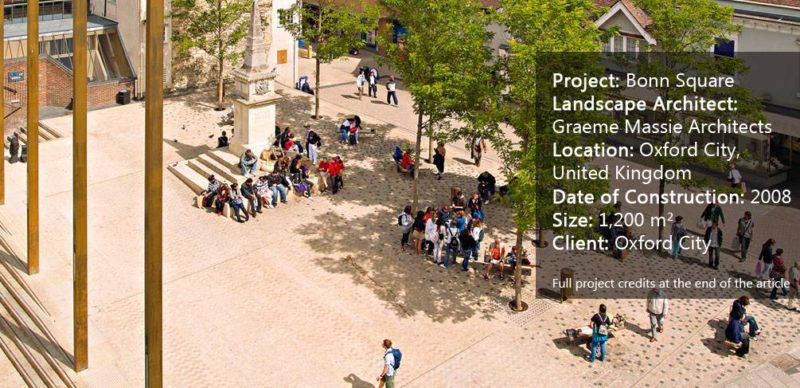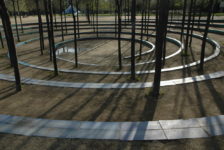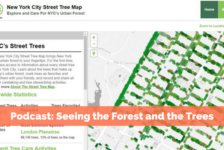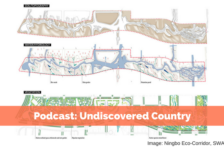Bonn Square, by Graeme Massie Architects, in Oxford City, United Kingdom. The city of Oxford is a unique place with a strong historic university identity. Like many cities built around universities, its public activity is focused on the spaces surrounding the campus buildings. Students and lecturers spend most of their time in these spaces, with the result that very little public space is developed outside of university property. Bonn Square is, therefore, one of the few public spaces in Oxford, and its transformation from a derelict, forgotten place into a contemporary yet historic square is worth exploring.
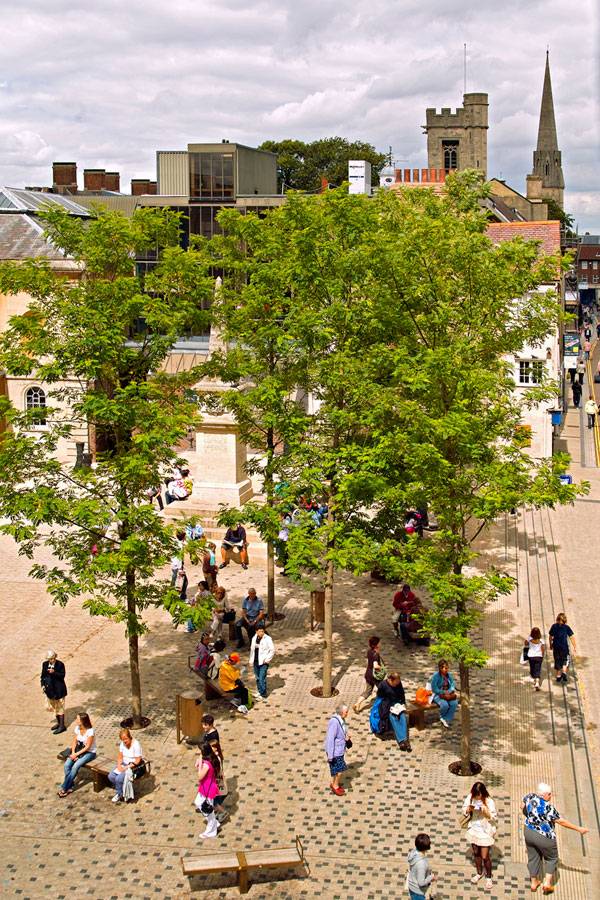
Bonn Square. Photo credit: David Stewart Photography
Bonn Square
A Catalyst for Urban Regeneration
Bonn Square falls within the boundary of the Oxford Central Conservation Area, which includes the old city and the university. It was formed in a piecemeal fashion over the years and includes historic structures, with various land parcels under separate ownership. The square occupies an important intersection of four major routes, but its fragmented form had meant that it had no definite function or character. Modernization of the city functions and a reduction in natural surveillance resulted in a slow degradation of the square, turning it into a neglected and unsafe city space.
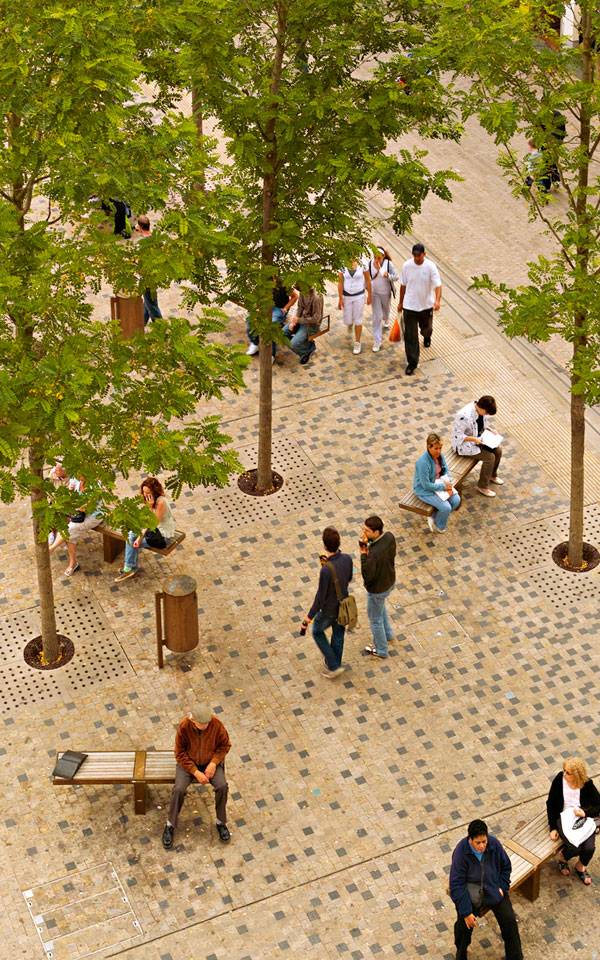
Bonn Square. Photo credit: David Stewart Photography
The Beginning of an Urban Regeneration
By the end of the 20th century, Oxford City Council members realized that they needed to revive parts of the historic city and begin urban regeneration. The redesign of Bonn Square was flagged as a catalyst project, and a RIBA open international design competition was held in 2005. This was won by Graeme Massie Architects, which successfully met the principal design challenge of transforming the neglected square into a welcoming, modern, and flexible public space. The design received planning permission in 2006, and the new square opened in 2008.
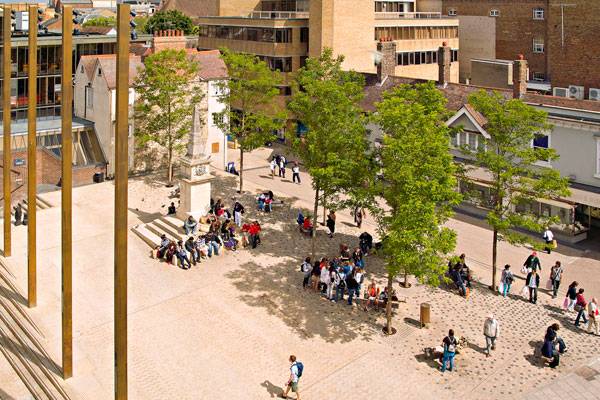
Bonn Square. Photo credit: David Stewart Photography
Uniting the Old and the New
Graeme Massie’s concept for the design of Bonn Square was simple: Create a contemporary open space while preserving and enhancing the important historic assets of the square. One of the key factors in achieving this was the use of sandstone paving to pull the elements of the square together, creating spatial clarity and improving permeability.
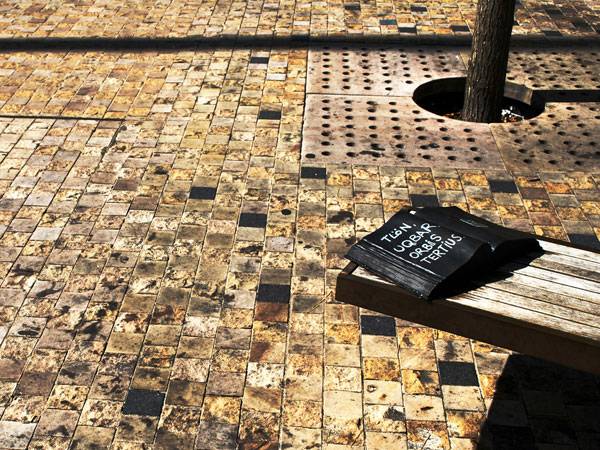
Bonn Square. Photo credit: Graeme Massie Architects
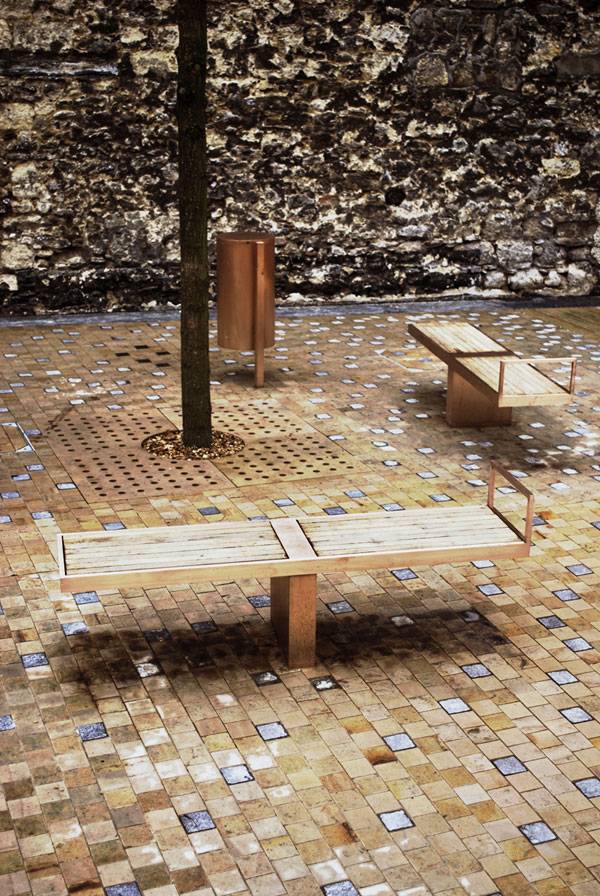
Bonn Square. Photo credit: Graeme Massie Architects
Time as an Element of Design
An important aspect of the design was the introduction of “time” as an element, using materials in a contemporary manner that reflects and references the past. For instance, the use of sandstone as a paving material meant that the surface would change over time as the space is used. This molding of the materials recalls a similar change in time in the old stone stairs of the university. Other references to time include bronze furniture and fittings, which will patinate and stain as time goes on, and tree species that were selected for the manner in which they change throughout the year.
Key Design Elements
The design of Bonn Square is defined by four key elements. The first is the variegated sandstone surface that unites the square’s components and connects the space to the historic fabric of Oxford. The second is a central ramped area, which allows the square to be easily accessed by all users while accommodating the archaeological remains of St. Peter-le-Bailey Church and its cemetery. The third is a grove of Robinia pseudoacacia trees, which recall trees commonly found in the university college while shading a collection of bespoke bronze street furniture. The fourth is four 15-meter-high bronze lighting columns that act as landmark features within the cityscape and provide lighting for the square.
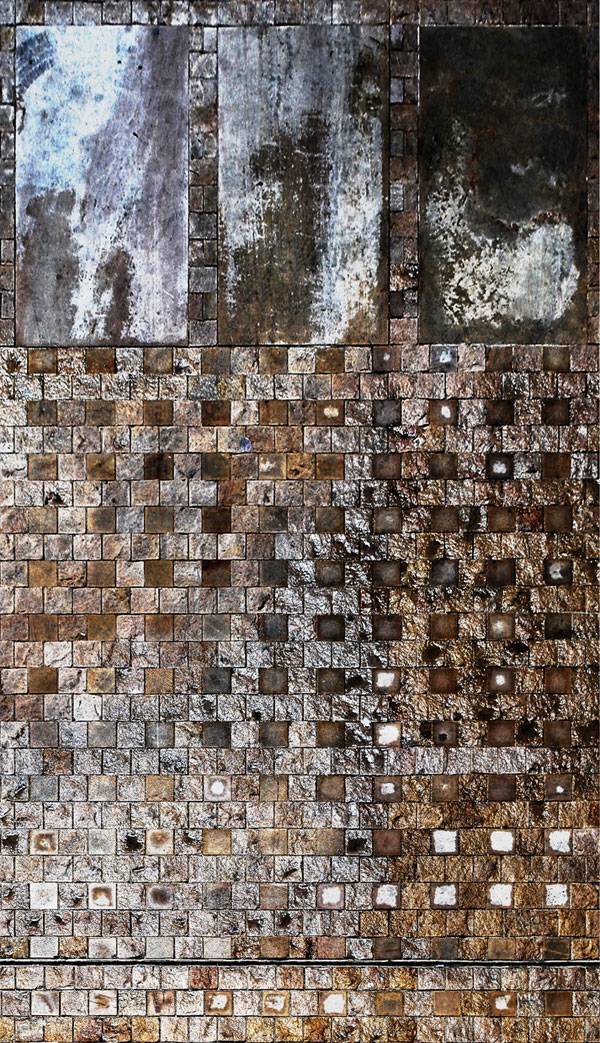
Bonn Square. Photo credit: Graeme Massie Architects
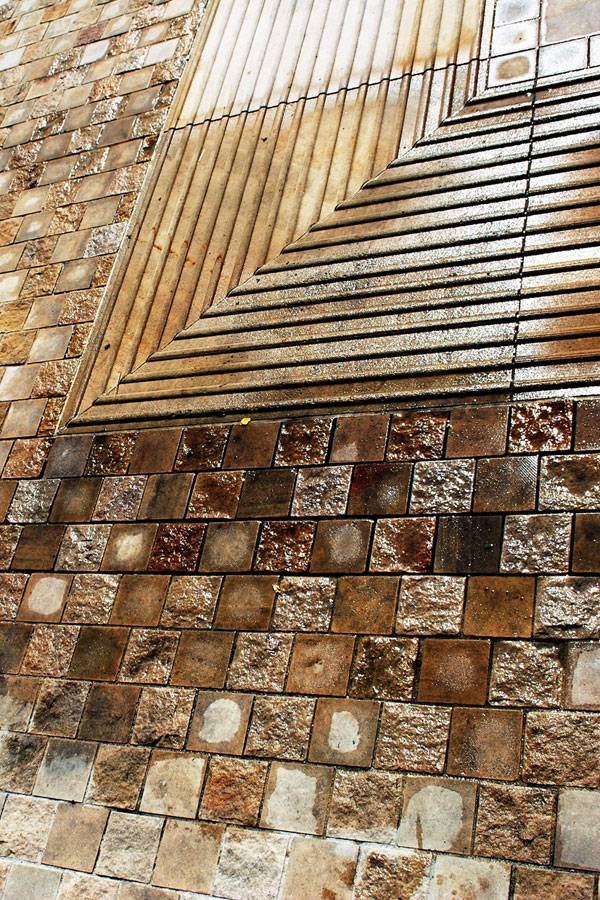
Bonn Square. Photo credit: Graeme Massie Architects
New City Function
Bonn Square has demonstrated that it is possible to combine the preservation of historic value with the current public space needs. The project has radically altered the character of Bonn Square and created a flexible space that provides a safe and accessible venue for formal and informal civic events. Its reference to the historic fabric allows the square to connect the new and the old, forming a backdrop to the future life of the city. What is clear about this project is that sometimes all it takes is a deep understanding of the context and a careful manipulation of materials to transform a public space. Do you like this project? Let us know in the comments below! Go to comments
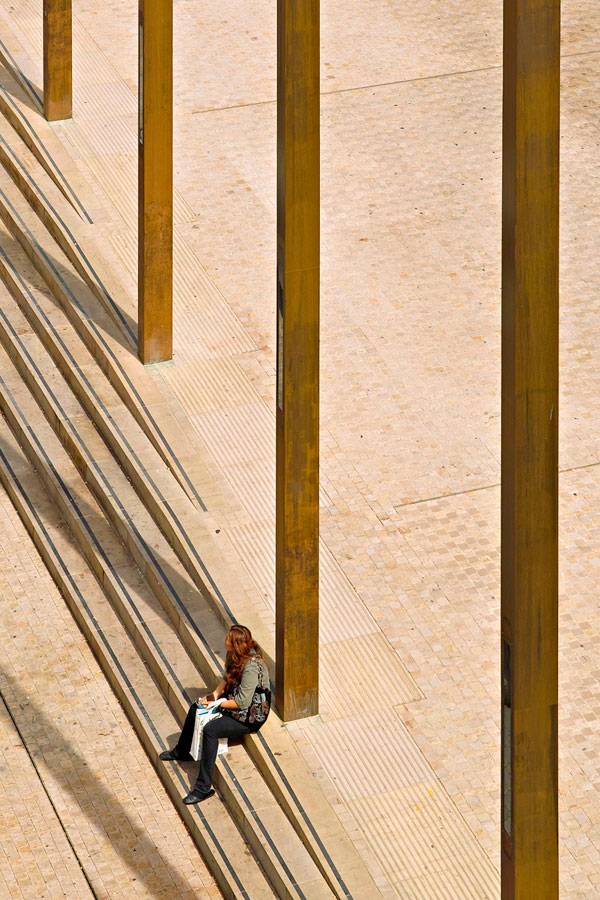
Bonn Square. Photo credit: David Stewart Photography
Full Project Credits For Bonn Square
Project Name: Bonn Square Landscape Architect: Graeme Massie Architects Location: Oxford City, United Kingdom Date of Construction: 2008 Size: 1,200 m² Client: Oxford City Award: Oxford Preservation Trust Environmental Award, October 2009 Website: www.graememassie.com Facebook: www.facebook.com/graememassiearchitects Recommended Reading:
- Becoming an Urban Planner: A Guide to Careers in Planning and Urban Design by Michael Bayer
- Sustainable Urbanism: Urban Design With Nature by Douglas Farrs
Article by Rose Buchanan Return to Homepage
Published in Blog


